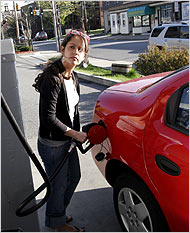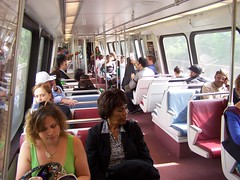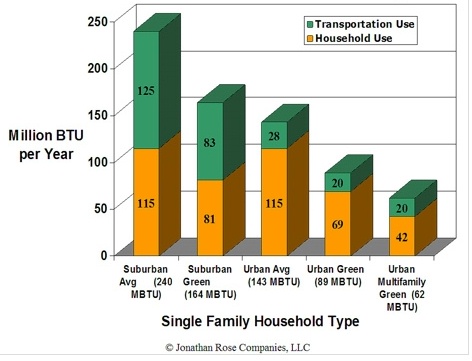When the experts are wrong on how to address climate change

Jodi Hilton for The New York Times. Fernanda Tapia pumping gas for her Dodge Neon.
There is discussion in many circles about the recent National Academy of Sciences/ Transportation Research Board report, Driving and the Built Environment: The Effects of Compact Development on Motorized Travel, Energy Use, and CO2 Emissions -- Special Report 298, that has been interpreted by many sources (i.e., "Forget Curbing Suburban Sprawl: Building denser cities would do little to reduce CO2 emissions, a new NAS report concludes from Technology Review) as saying that changing land use patterns and therefore mobility behavior, won't have much impact.
(Press release summary.)
The report has been misinterpreted. Clearly, the Committee found that various scenarios of reducing vehicle and petroleum use would reduce CO2 emissions. Where the committee members differed was in the assessment in the likelihood of change. The majority believe that reversing sprawl in a significant fashion is not likely over the next 40 years.
Reid Ewing and others have published a response averring that significant changes are possible. (Prof. Ewing was on the committee that produced the report.)
The reality is that in places where urban form is compact and connected and transit is present, there is significant reduction in driving. And if we can weatherize the buildings, we can do better still.
I was shocked to learn that per capita, DC uses 50% less gasoline than other U.S. "states." That's because of our urban form in the core of the city, plus the great subway system.
The table U.S. Gasoline Per Capita Use By State shows gasoline usage from the 50 states and DC. The average nationally is 464 gallons per person per year, in DC it's 215.

Riding midday on the Washington DC subway system.
Note that New York State's usage is significantly below the U.S. average too, likely because of reduced gasoline consumption in New York City due to high numbers for walking and transit.
Also see the new book Green Metropolis by David Owen, who first wrote about this topic in the New Yorker article, "GREEN MANHATTAN Why New York is the greenest city in the U.S.

Labels: green-environment-urban, sustainable land use and resource planning, transportation planning



0 Comments:
Post a Comment
<< Home